Designing for Change: Chicago Protest Art of the 1960s‒70s
Exhibition Resources
Ebony Magazine
The Chicago-based Ebony magazine, founded in 1945 by John H. Johnson and the flagship magazine of Johnson Publishing Company, initially focused on African American achievement and celebrity, but over time the magazine paid more attention to issues of social justice. Once a year, Ebony published a special issue devoted to timely themes with dramatic covers, five of which are on display in Designing for Change: Chicago Protest Art of the 1960s–70s. You can peruse past issues of Ebony here.
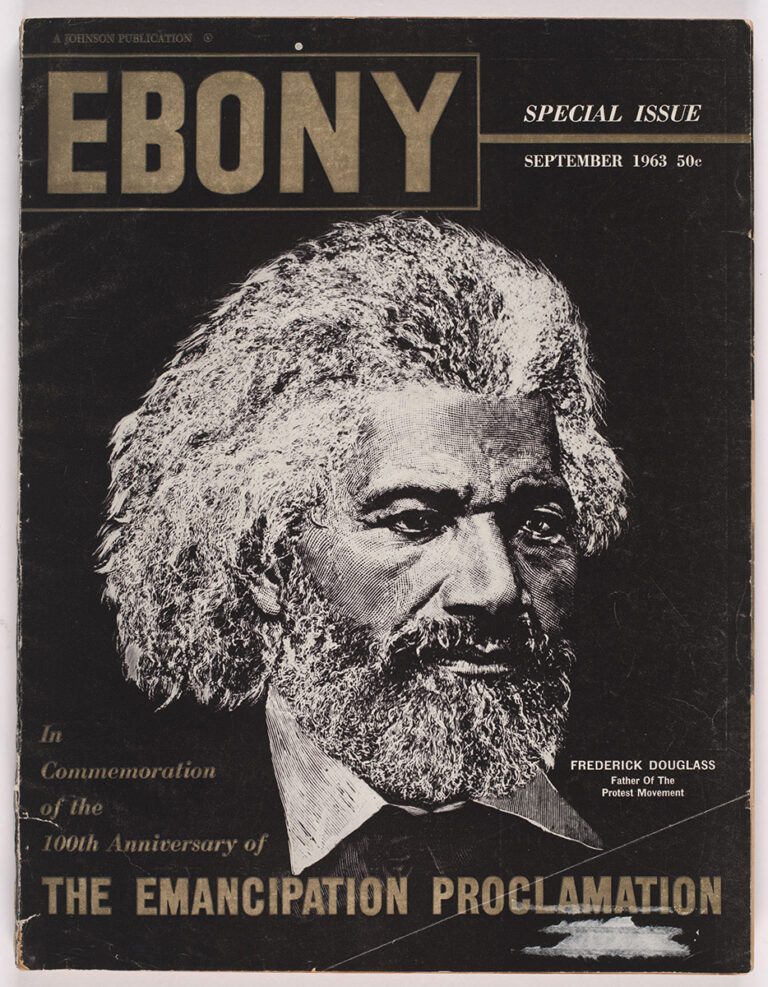
Ebony Special Issue: The Emancipation Proclamation, September 1963
Cover designed by Herbert Nipson and Norman Hunter
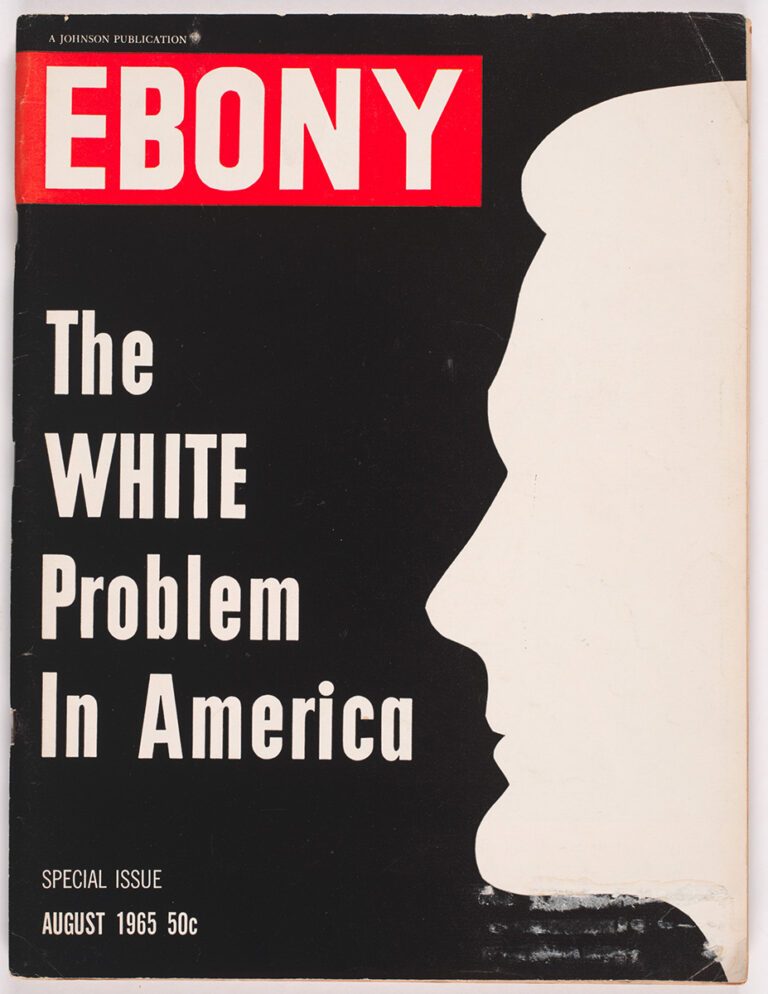
Ebony Special Issue: The White Problem in America, August 1965
Cover designed by Herbert Temple
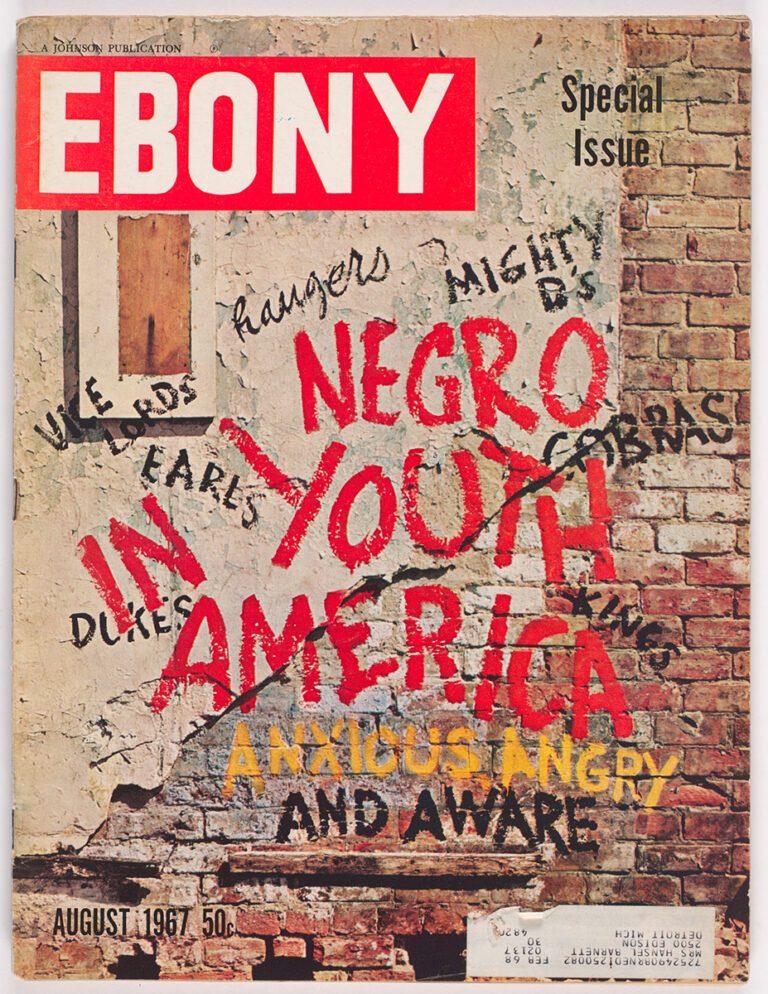
Ebony Special Issue: Negro Youth in America, August 1967
Cover designed by Cecil Ferguson
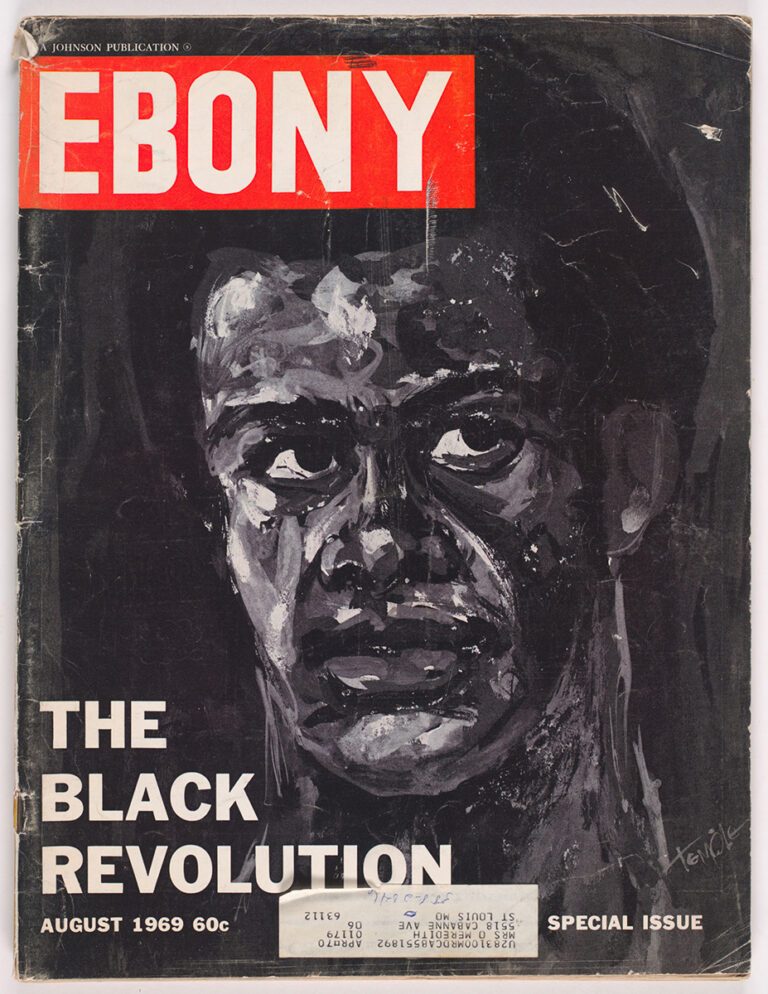
Ebony Special Issue: The Black Revolution, August 1969
Cover designed by Herbert Temple
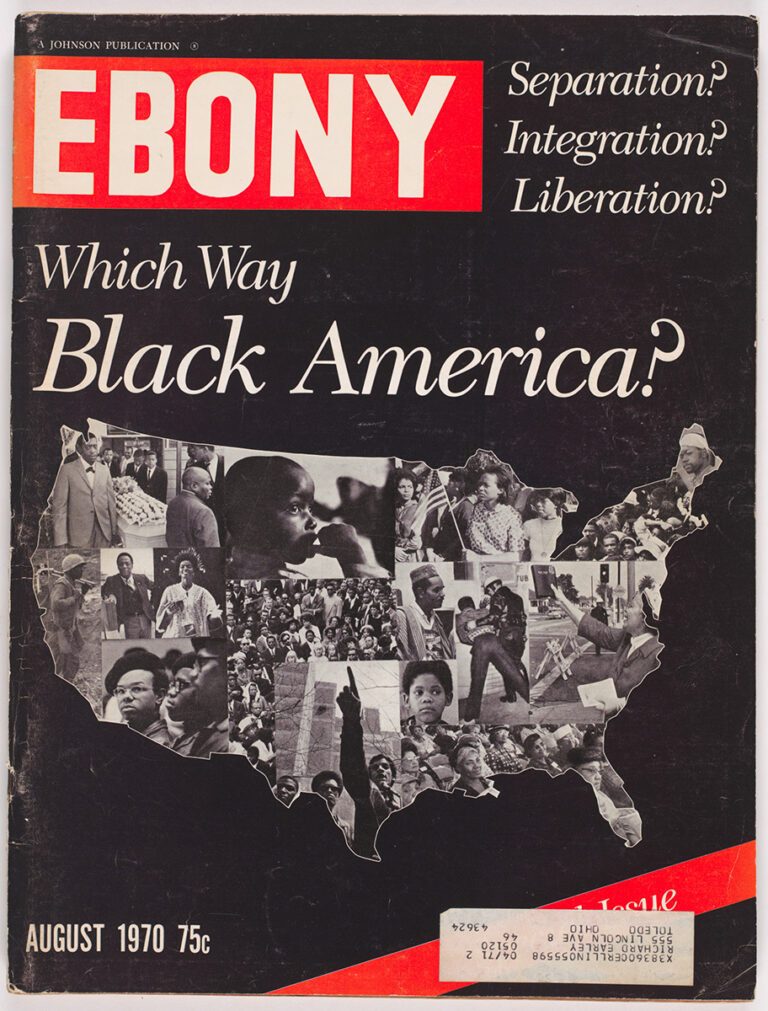
Ebony Special Issue: Which Way Black America?, August 1970
Cover designed by Herbert Temple

Anti-Vietnam War Buttons
Mass-produced and worn by millions, anti-Vietnam War buttons expressed personal opposition to the conflict and created a sense of solidarity among strangers. Most buttons were created by unknown designers, but their artistry and messaging still resonate.
First Row
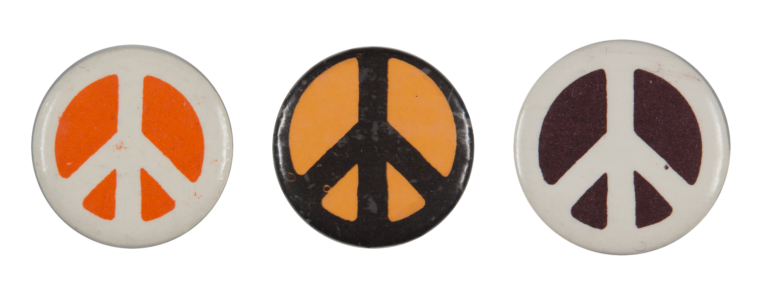 Peace symbols
Peace symbols
Designed by Gerald Holtom, 1958; unknown maker, c. 1965
The iconic peace symbol was originally designed for the British Campaign for Nuclear Disarmament. The vertical line in the center represents the flag communication signal for the letter “D,” and the downward lines on either side represent the letter “N.” Together, they stand for nuclear disarmament.
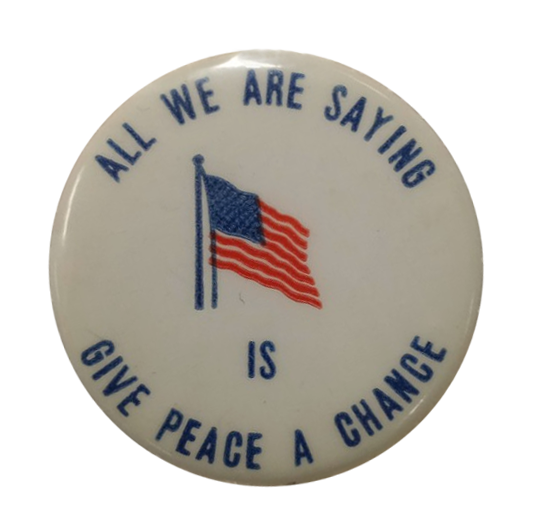 All We are Saying is Give Peace a Chance
All We are Saying is Give Peace a Chance
Unknown designer and maker, 1969
The motto of this button is a lyric from a song written by John Lennon and performed with his wife Yoko Ono that became a popular anthem of the anti‒Vietnam War movement.
Second Row
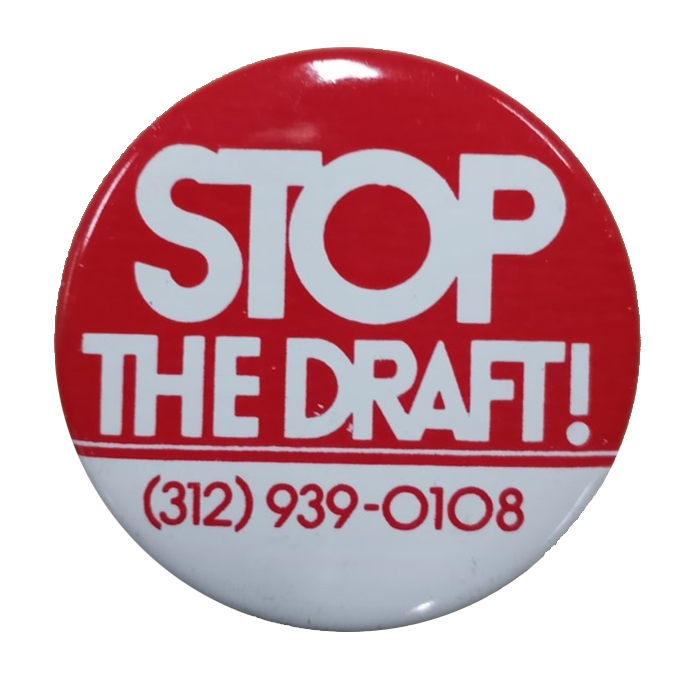 Stop the Draft
Stop the Draft
Unknown designer and maker, c. 1968
Between 1964 and 1973, the US military drafted 2.2 million American men, sparking about 500,000 young men to resist the draft.
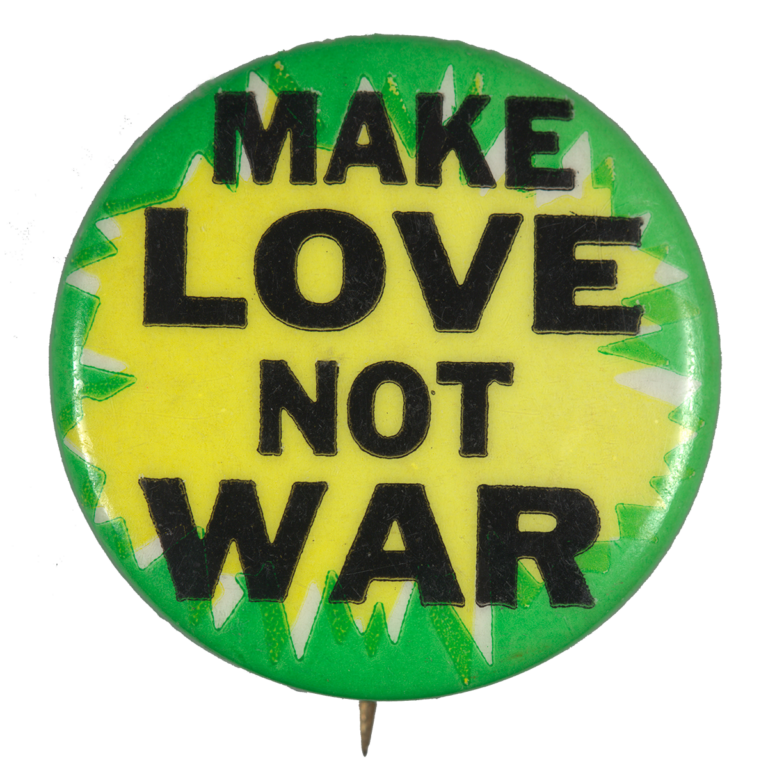 Make Love Not War
Make Love Not War
Unknown designer and maker, c. 1968
According to Penelope Rosemont, she, her husband Franklin, Bernard Marszalek, and Tor Faegre, who operated an activist bookshop in Chicago, coined the phrase “Make Love Not War” in March 1965, and it quickly became the official slogan of the anti‒Vietnam War Movement.
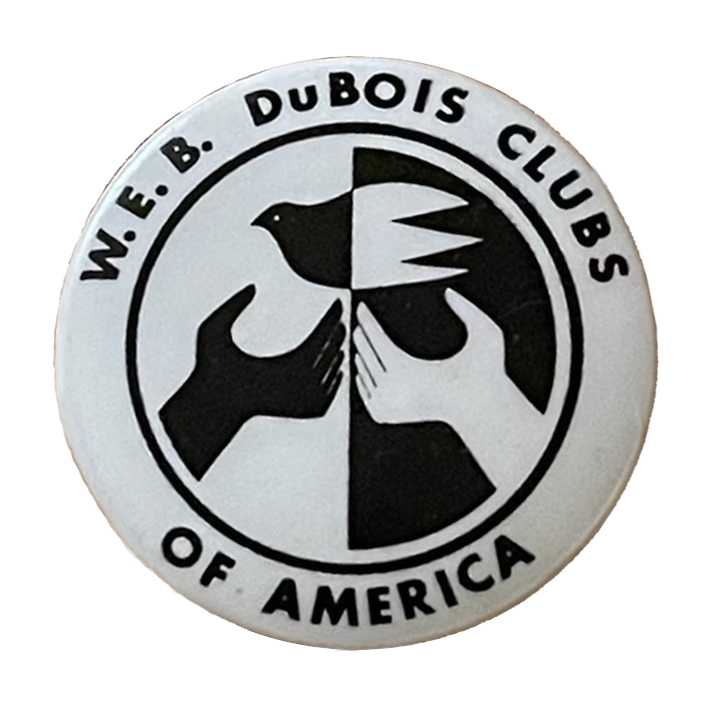 W. E. B. DuBois Clubs of America
W. E. B. DuBois Clubs of America
Unknown designer and maker, c. 1967
The black and white design of this button signifies the membership of the W. E. B. DuBois Clubs of America, an interracial youth party sponsored by the Communist Party USA with offices in Chicago.
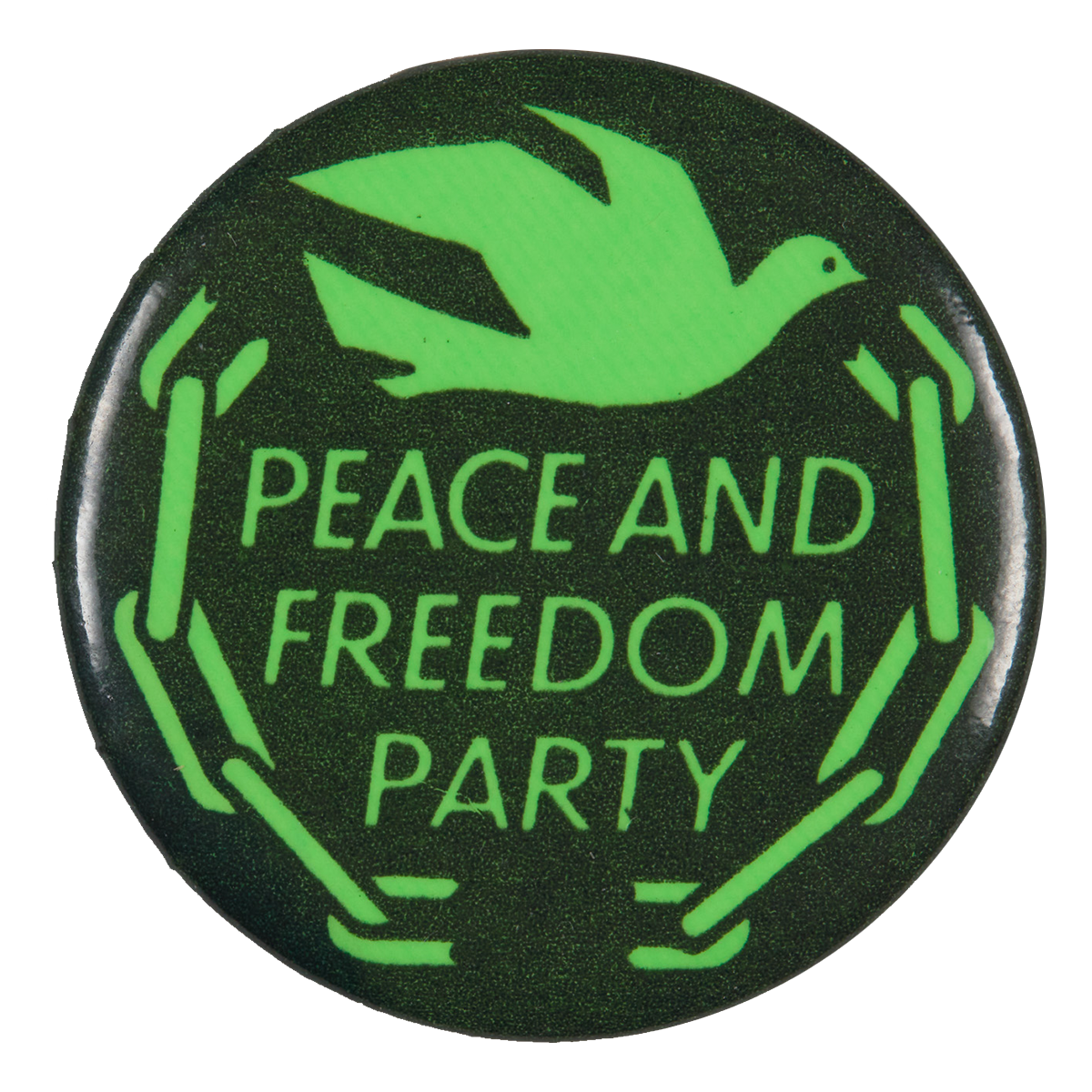 Peace and Freedom Party
Peace and Freedom Party
Unknown designer and maker, 1968
This button is from the presidential campaign of Eldridge Cleaver, a prominent Black Panther and candidate of the left-wing Peace and Freedom Party that endorsed racial equality and an end to the Vietnam War.
Third Row
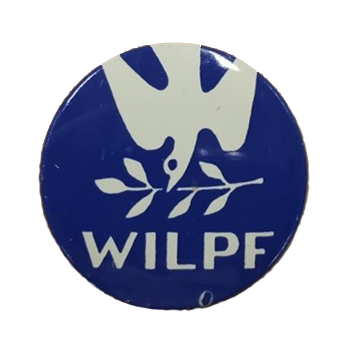 WILPF (Women’s International League for Peace and Freedom)
WILPF (Women’s International League for Peace and Freedom)
Unknown designer and maker, c. 1967
A white dove of peace adorns this blue button from the Women’s International League for Peace and Freedom, originally founded by Jane Addams of Chicago in 1915 to oppose the United States entering World War I.
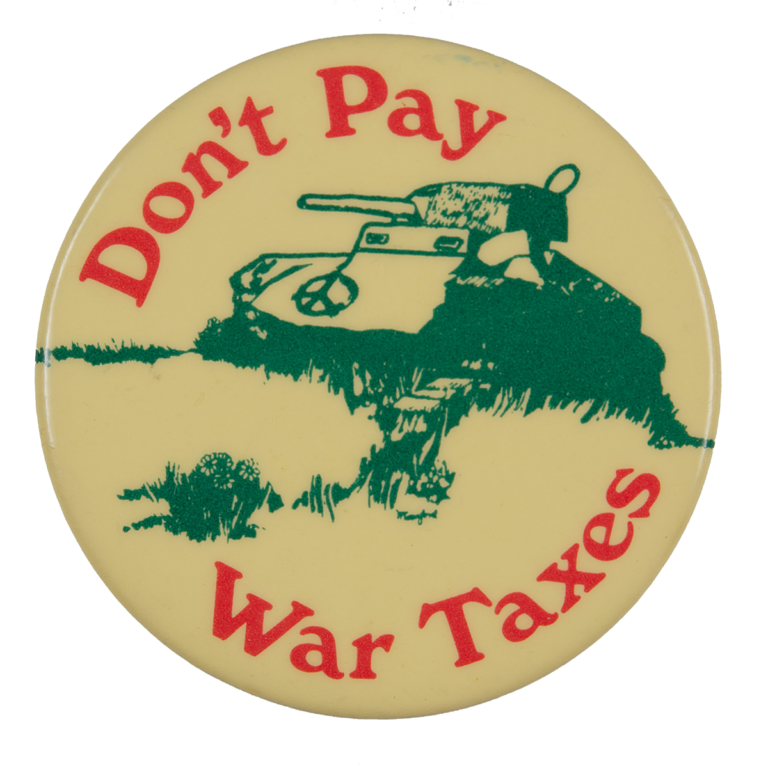 Don’t Pay War Taxes
Don’t Pay War Taxes
Unknown designer and maker, c. 1965
This button is from the War Resisters League, founded in 1923 by people who had opposed World War I. They were the first pacifist organization to call for an end to the Vietnam War. Note the tank bears a peace symbol.
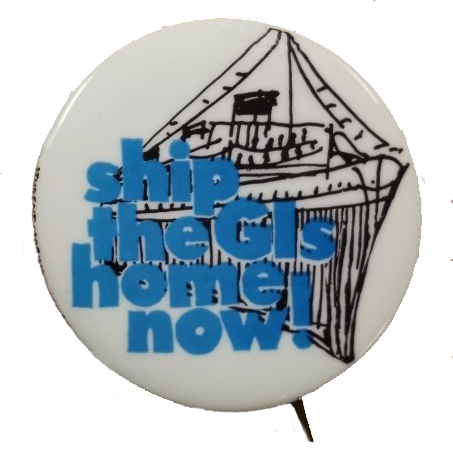 Ship the GIs Home Now
Ship the GIs Home Now
Unknown designer and maker, c. 1969
The slogan on this button was distributed by the Student Mobilization Committee to End the War in Vietnam, which organized several student strikes on college campuses throughout the country.
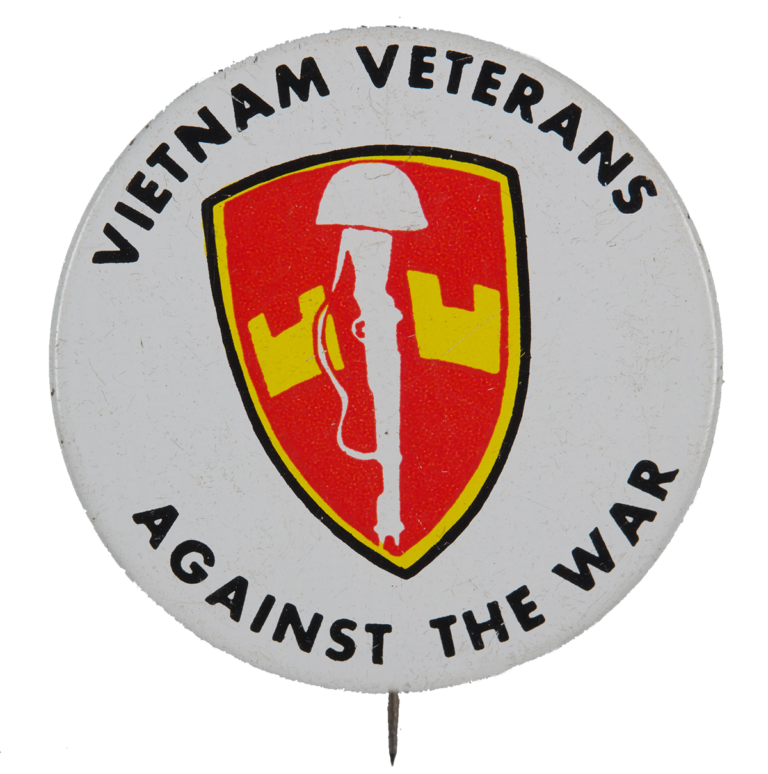 Vietnam Veterans Against the War
Vietnam Veterans Against the War
Unknown designer and maker, c. 1968
Founded in 1967, the Vietnam Veterans Against the War derived their symbol from the US Military Assistance Command in Vietnam. Approximately 25,000 veterans joined the organization to express their opposition to the war before the United States withdrew in 1973.

Rise Up!
Meet the contemporary artists whose work is featured in the exhibition.
Carlos Barberena
Carlos Barberena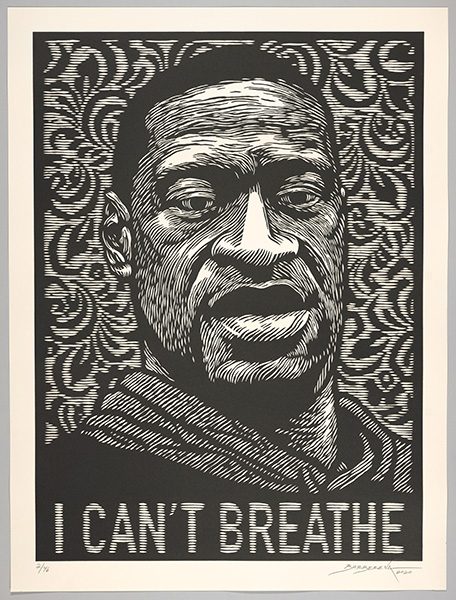 is a contemporary Nicaraguan printmaker best known for his satirical relief prints and the use of images from pop culture, as well as from political and cultural tragedies. Barberena lives and works in Chicago, where he runs the printmaking projects Bandolero Press and La Calaca Press. He is also a member of the Instituto Grafico de Chicago.
is a contemporary Nicaraguan printmaker best known for his satirical relief prints and the use of images from pop culture, as well as from political and cultural tragedies. Barberena lives and works in Chicago, where he runs the printmaking projects Bandolero Press and La Calaca Press. He is also a member of the Instituto Grafico de Chicago.
Nicole Marroquin
Nicole Marroquin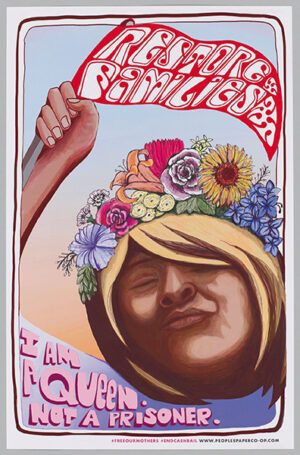 is an interdisciplinary artist, researcher and teacher educator whose current research looks at Chicago school uprisings between 1967–74. She has recently been an artist in-residence at the Chicago Cultural Center, with the Propeller Fund at Mana Contemporary, at Watershed, Ragdale, ACRE, and Oxbow.
is an interdisciplinary artist, researcher and teacher educator whose current research looks at Chicago school uprisings between 1967–74. She has recently been an artist in-residence at the Chicago Cultural Center, with the Propeller Fund at Mana Contemporary, at Watershed, Ragdale, ACRE, and Oxbow.
José L. Gutiérrez (elgtz)
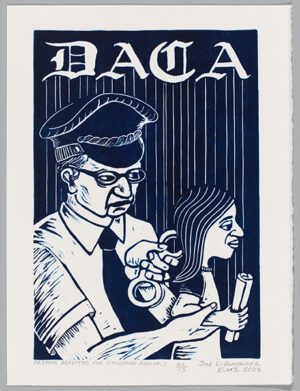 José Luis Gutiérrez (elgtz) is an artist and teacher with classroom and arts administration experience who is dedicated to creating programs that foster student and community empowerment. He strives to be a cultural worker committed to building community and addressing social justice issues through holistic arts education programs.
José Luis Gutiérrez (elgtz) is an artist and teacher with classroom and arts administration experience who is dedicated to creating programs that foster student and community empowerment. He strives to be a cultural worker committed to building community and addressing social justice issues through holistic arts education programs.
institutograficodechicago.org/jose-luis-gutierrez
Firebelly Design
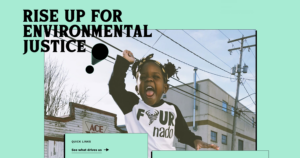 Firebelly Design is a socially conscious creative studio specializing in strategic design. With the motto “Good Design for Good Reason,” Firebelly has been building and nurturing communities since day one. In their longest running program, Grant for Good, they work alongside nonprofits that don’t otherwise have the resources to work with an outside agency.
Firebelly Design is a socially conscious creative studio specializing in strategic design. With the motto “Good Design for Good Reason,” Firebelly has been building and nurturing communities since day one. In their longest running program, Grant for Good, they work alongside nonprofits that don’t otherwise have the resources to work with an outside agency.
William Estrada
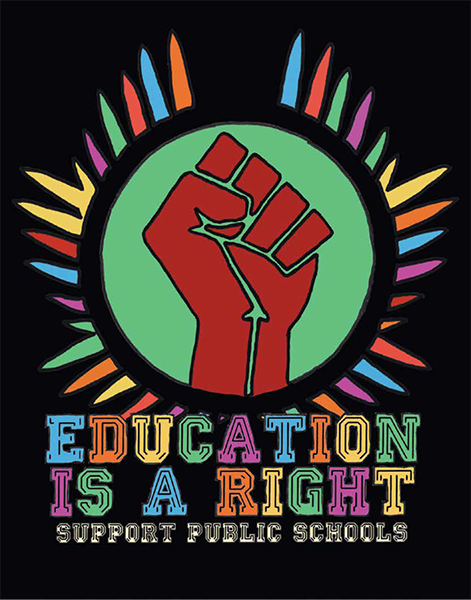 William Estrada grew up in California, Mexico, and Chicago. His teaching and art making practice focus on addressing inequity, migration, historical passivity, and cultural recognition in historically marginalized communities. He is currently a faculty member at the UIC School of Art and Art History and a teaching artist at Telpochcalli Elementary School.
William Estrada grew up in California, Mexico, and Chicago. His teaching and art making practice focus on addressing inequity, migration, historical passivity, and cultural recognition in historically marginalized communities. He is currently a faculty member at the UIC School of Art and Art History and a teaching artist at Telpochcalli Elementary School.
Monica Trinidad
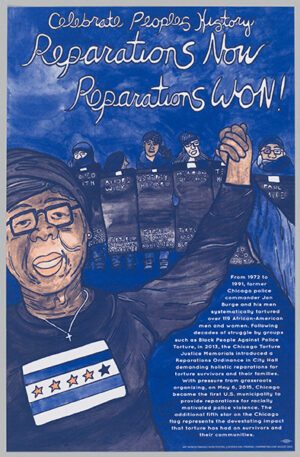 Monica Trinidad (she/they) is a queer Latine visual artist, communicator, cultural strategist. A lifelong Chicagoan, Monica has created zines, graphics, mixed media posters, communication strategies, and plans highlighting youth-led, intergenerational, and intersectional grassroots organizing work in Chicago and nationally.
Monica Trinidad (she/they) is a queer Latine visual artist, communicator, cultural strategist. A lifelong Chicagoan, Monica has created zines, graphics, mixed media posters, communication strategies, and plans highlighting youth-led, intergenerational, and intersectional grassroots organizing work in Chicago and nationally.
Aaron Hughes
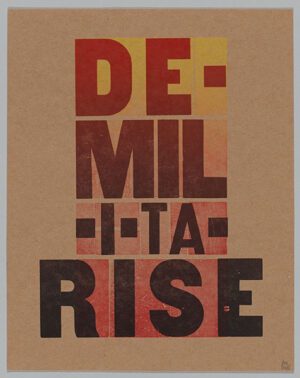 Aaron Hughes is an artist, curator, organizer, teacher, anti-war activist, and Iraq War veteran living in Chicago. He works with a variety of art and activist projects including: Prison + Neighborhood Arts/Education Project, Justseeds Artists’ Cooperative, About Face: Veterans Against the War, and emerging Veteran Art Movement.
Aaron Hughes is an artist, curator, organizer, teacher, anti-war activist, and Iraq War veteran living in Chicago. He works with a variety of art and activist projects including: Prison + Neighborhood Arts/Education Project, Justseeds Artists’ Cooperative, About Face: Veterans Against the War, and emerging Veteran Art Movement.
Tonika Lewis Johnson & Janell Nelson
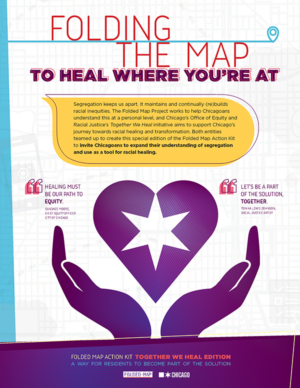 Tonika Johnson is a photographer, social justice artist and life-long resident of Chicago’s South Side neighborhood of Englewood. She is also co-founder of the Englewood Arts Collective and Resident Association of Greater Englewood, which seek to reframe the narrative of South Side communities and mobilize people and resources for positive change.
Tonika Johnson is a photographer, social justice artist and life-long resident of Chicago’s South Side neighborhood of Englewood. She is also co-founder of the Englewood Arts Collective and Resident Association of Greater Englewood, which seek to reframe the narrative of South Side communities and mobilize people and resources for positive change.
Janell Nelson is a visual design consultant with almost 20 years of graphic design experience in educational publishing and non-profit spaces. She is the owner and principal designer of JNJ Creative, which produces collateral and design concepts for philanthropic and public-serving entities and the co-founder and co-director at Englewood Arts Collective.
